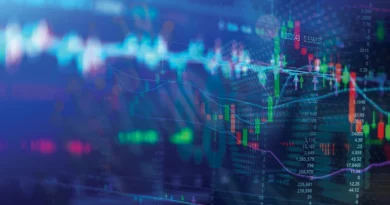Will the Fed raise rates again? The scary prediction
The Fed and its interest rate policy agitates markets, economists and investors: is an increase in the cost of money still possible? The question emerged after bets on an almost certain rate cut in the spring began to falter in the wake of stronger-than-expected macro data.
Faced with a resilient US economy and falling inflation, but not at the accelerating pace that was expected, some experts are even hypothesizing the possibility of further increases in the cost of financing in 2024.
A prospect, the latter, which would truly a surprise and one that scares global finances as they await a rate cut that can finally ease mortgages and loan costs and therefore support demand.
While waiting for the Fed minutes and the next decision at the March 20 meeting – when there will also be economic and dot plot updates – this is why a return to higher rates is not so impossible (according to analyzes and experts).
Fed towards a rate increase? The discussion that is starting to make investors nervous concerns the next, far from obvious, moves on interest rates.
Why is the possibility of increases in the cost of borrowing emerging during 2024? A Bloomberg analysis tries to explain the alarming hypothesis, but which is no longer seen as impossible.
Bets on incoming lower rates were widespread and almost certain a few weeks ago, so much so that Jerome Powell wanted to underline that the FOMC was unlikely to cut the cost of money starting from March.
Less than three weeks later, traders have not only ruled out March as a possibility, but May also seems unlikely, and belief about the June Fed meeting is also wavering, as swap trading shows.
read also Is this US inflation data an alarm for the Fed? On Friday, February 16, former US Treasury Secretary Lawrence Summers said what many had already thought: "there is a significant possibility" that the next move will be upward.
While another hike would be too risky and perhaps difficult for the market to tolerate, some Fed watchers believe we could repeat what happened in the late 1990s: just a short cycle of rate cuts setting the stage for subsequent hikes .
In fact, no central bank policymaker in recent weeks has publicly suggested that further rate hikes were on the table.
Powell said on January 31, “we think our policy rate is probably at its peak for this tightening cycle.” On Friday, San Francisco Fed President Mary Daly, considered a centrist, said that 75 basis points of cuts in 2024 was a "reasonable baseline expectation." At the same time, the central bank has not offered the kind of “forward guidance” regarding a medium-term policy framework that has sometimes been presented in the past, leaving investors with less certainty.
Volatile economic data this month has led to swings in Treasury bonds, futures and swap contracts.
Meanwhile, yields rose last week following warmer-than-expected consumer and producer price index data.
A key subset of CPI services prices rose the most in nearly two years.
Job gains for January also exceeded forecasts.
The decline in retail sales for the month, however, was counterpointed by evidence that the economy continues to expand faster than its long-term potential.
What do experts think about Fed rates? Summers, a Harvard University professor and Bloomberg Television contributor, suggested perhaps a 15% chance that the Fed's next move will be a hike.
Mark Nash, who runs macro absolute return funds at Jupiter Asset Management, puts the probability at 20%.
At Société Générale, chief FX strategist Kit Juckes told clients in a report last week that if “the U.S.
economy reaccelerates, the Fed will eventually have to tighten again and the dollar will recover,” possibly returning to its 2022 all-time high Analysis of short-term interest rate options by Bloomberg Intelligence showed that traders have begun to price in some possibility of a Fed hike next year in the wake of Tuesday's CPI release.
Strategists at Citigroup argue that there should be even more hedging for the risk that the Fed engages in only a very short easing cycle, followed by rate hikes shortly thereafter.
The bank, whose economists expect the Fed's first rate cut in June, sees some potential for the next few years that mirrors what happened in the late 1990s.
Beyond the volatility of domestic economic data, there are global geopolitical considerations, said Pacific Investment Management Co.
economist Tiffany Wilding.
Among them: conflict in the Red Sea and drought-induced slowdowns in the Panama Canal, with shipping disruptions driving up transportation costs.
All of this could contribute to a “stop-start policy of easing.
The risk is there and it is very difficult to predict,” he added.
BMO's Davis argued that the end result for the rates market in 2024 is volatility on both options (cuts and hikes).




